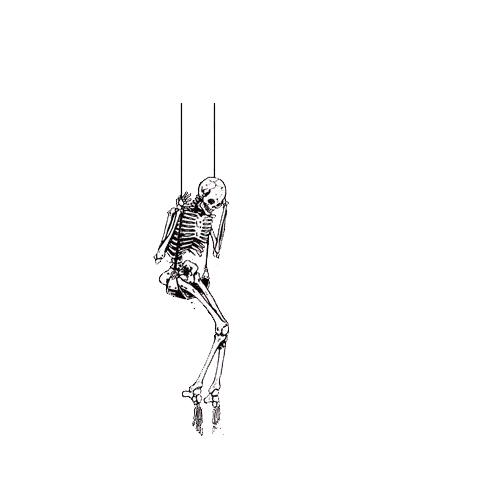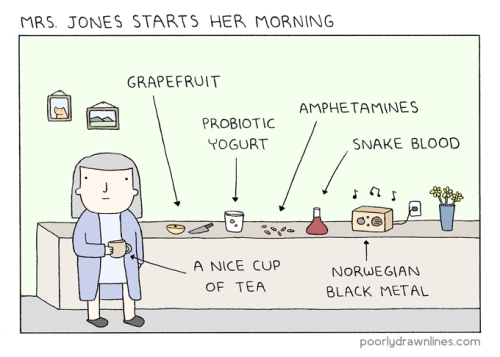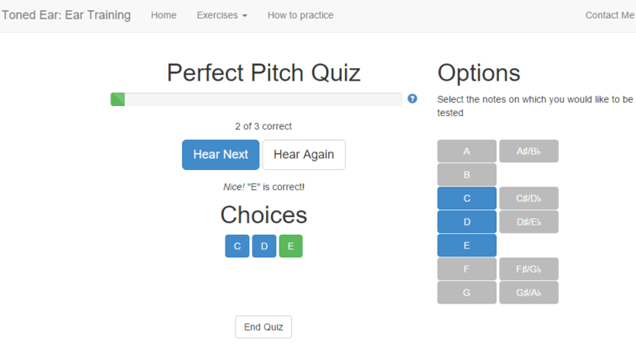(Warning: Hugo neepery, possibly the last of the season. Avoid if you don’t care.)
It’s late, and I’m experiencing a bit of insomnia, so, hello, now that I’m home, here are some disjointed thoughts about the Hugo results and the post-award freakout about them that the Puppies appear to be having at the moment.
1. What did the 2015 Hugos teach us? Well, basically that slates are the fucking kiss of death, Hugo-wise. If you create them, it kills your credibility with the voters; if you’re on them, it kills your chances of winning — indeed, it kills your chances of winding up above “No Award,” unless you happen to be a movie that grossed $775 million worldwide. The moral of the story really is: Slates! Not even once!
Have the various Puppies learned this very simple and obvious lesson? Apparently not, since the response from those quarters appears to be “We just didn’t slate hard enough! We’ll be back next year and we’ll slate even harder!” Which, well, you know. Bless their hearts.
The Puppies’ problem is that, inasmuch as everyone now knows being on a slate is a hard and fast ride south of the “No Award” line, it will be very difficult for them to find anyone who is genuinely award-caliber who would want to be on their future slates. My understanding is the Sad Puppies, at least, plan to solve this problem by not actually alerting their future sub-No Award victims that they’re going to be on the slate before the slate is announced. Given what we know of the results of slating at this point, if they go ahead and follow through on this plan, it’ll be a monumental asshole move on their part.
2. The Puppies continue to appear genuinely flummoxed that the Hugo voters rejected everything and everyone they slated (except Guardians of the Galaxy, which as previously noted they can hardly take credit for), arguing on one memorable occasion that if The Three Body Problem, the eventual best novel Hugo winner, had been on the slates, it would have finished below “No Award,” thus proving the bankruptcy of voting for “No Award” in the first place.
This is a bit like saying that if the person who didn’t get on the bus you then proceeded to drive off a cliff were on the bus, they would probably be dead now — it’s trivially true, but misses the point that you drove the bus off the cliff. The Puppies knew that slating was anathema to the large mass of Hugo voters — they had a dry run the year before, proffering a limited slate with Sad Puppies 2, and saw their nominees largely finish in fifth place or below “No Award” — but they did it anyway and now want to be shocked, shocked that their antics predictably resulted in their nominees doing very poorly indeed.
The going line in those quarters at the moment is that the blanket “No Award” just proves the Hugo Awards are corrupt. Well, no, that’s stupid. What the blanket “No Award” judgment shows is that the large mass of Hugo voters don’t like people trying to game the system for their own reasons that are largely independent of actual quality of work. In the Sad Puppy case the reasons were to vent anger and frustration at having not been given awards before, and for Brad Torgersen to try to boost his own profile as a tastemaker by nominating his pals (with a few human shields thrown in). In the Rabid Puppy case it was because Vox Day is an asshole who likes being an asshole to other people. And in both cases there was a thin candy shell of “Fuck the SJWs” surrounding the whole affair.
The shorter version of the above: You can’t game the system and then complain that people counteracting your gaming of the system goes to show the system is gamed. Or you can, but no one is obliged to take you seriously when you do.
3. And did the Puppy nominees deserve better than to be consistently slated below “No Award”? Surely some of them did, in my opinion. I myself put several slated nominees above “No Award” because, consistent with my stated philosophy on these things, I thought they were deserving nominees and I didn’t want to penalize them simply because they were (largely) being used as unwilling pawns by jerks. But as I’ve also said elsewhere, voting against all the slated nominees was a perfectly valid action, if you believe slating is in itself inherently inimical to the Hugo awarding process. It turns out a lot of people decided that was a thing they needed to do.
And yes, that sucked for a number of nominees who got put on the slates either unawares or not fully briefed on the heavily-politicized aspects of the slate (not to mention the fact that they would also in many cases be unwittingly associated with the bigoted shitheel who used the Sad Puppy slate like a parasitic wasp uses the hollowed-out husk of a tarantula). They deserved better than to be used, and I hope many of them realize that their ranking below “No Award” was not a reflection on them personally, but was instead a referendum on the mechanism of slating for the award. Many of them deserved to be Hugo nominees for their work, and I suspect they will be again, although hopefully not on a slate.
(But then there were the ones who didn’t deserve to be Hugo nominees, in my opinion, and/or the ones who were just assholes regarding the awards, the people voting for them and the entire process. With regard to these folks, fuck ’em. I didn’t have a problem in the slightest ranking them below “No Award,” and I won’t have a problem doing it again, should they ever slime their way back onto the ballot.)
4. With the exception of Vox Day and a few of his pals, who were just straight-up assholes, I feel a small bit of pity for the Puppies. I don’t think they actually knew what they wanted out of this whole mess, and I still don’t think they know. Yes, they can vomit up astounding amounts of wounded verbiage about SJWs and conspiracies and blue collar cracking good tales with their nuggety nugget-ness or whatever. But their love-hate act with the Hugos and everyone one else voting on them was just incoherent. It didn’t help that pretty much every argument they offered for their slating action was shoddily-constructed and easily disprovable, based largely on conspiracy thinking or assertions that could have their feet kicked out from under them by a trip to Wikipedia. Which didn’t keep them from offering them over and over. Epistemic closure was not the Puppies’ friend.
In the end, the meat of the Sad Puppy argument was “Brad wants to nominate his friends so let’s fix that and we do mean fix,” and the meat of the Rabid Puppy argument was “Ha ha ha fuck you and also buy Castalia House product oh God I’m still a failure in life aren’t I.” These arguments were painfully obvious, and not easily swept aside by the interrelated Puppy camps’ poor arguments or resentment-laden rhetoric. This is why, aside from the fundamental problems with slating, which were considerable, very few people outside the Puppy camps were persuaded by them.
5. And also, you know. The Puppies acted like jerks the whole way through, which is another, uh, questionable tactic. Look: even if the Puppies weren’t largely slating friends and/or work from their own publishing houses, and then trying to justify those choices by creating a conspiracy of liberals arrayed against them, the fact that largely every bit of rhetoric coming out of their quarters could best be described as “high screech attack” was not going to make them friends with the general Hugo voting electorate, and isn’t making them friends in the aftermath, either.
What’s the deal? Vox Day is a grasping sociopath, in my opinion, so that’s that. But the rest of them? It’s been suggested that in the case of Brad Torgersen, at least, this is an intentional career move, being unpleasant to “liberals” (which in this case seems to mean anyone outside the Puppy camp) to help lock in a conservative audience. And, I guess, maybe? But I know a lot of conservatives — no, really — and as a class they have no higher percentage of jerk among them than does any other political stripe. Catering to the conservative jerk audience seems like aiming fairly low. And in any event, I don’t see the Puppy phenomenon as really being about conservatism so much as being about other things, with conservatism (or reactionary nonsense) thrown on top to mask and/or justify the actions.
But other people were jerks to the Puppies! you might say. Well yes, many people were. But those people were not attempting to argue for the validity of slating or of specific nominees to a vast number of voters. Leaving aside the schoolyard logic of “they were mean too,” it’s not actually smart, when you are trying to convince people to take your slate and nominees seriously, to shit all over them and the awards they care about, for months on end. They should try not doing that. That’s, like, basic marketing.
6. That said, I think it’s too late to change the Puppy brand. This was the third year of the campaign and the second year that it incorporated Vox Day, bigot — and the year that Vox Day actually ended up controlling the Puppy brand and using it for his own goals, much to the unconvincing, backtracking “he’s not with us” surprise of the Sads. Now when the general population thinks of “Puppies” in the context of the Hugos, sad or rabid, they’re thinking of bigoted self-promoters pushing questionable work. Is that fair? It’s totally fair to some of the Puppies, not to others, and far less fair to the people who might be put on the slates in future years without their knowledge or against their will.
And again: Who on Earth at this point would choose to be on a Hugo slate? Either people who crave a nomination by any means necessary, which is tantamount to admitting one cannot get on the ballot any other way, or people who want to get on the slate only to block other people from being on the slate. In other words: The talentless and the assholes. Anyone who wants an actual shot at the award will do their damnedest to stay off a slate — any slate, but especially a Puppy slate, which now has a certain whiff of anger, resentment and most of all failure about it.
7. Will the primary Puppies suffer for their participation in slating? In terms of selling books, I suspect not. The vast majority of book readers neither know nor care about the inside pool of the Hugo Awards and apparently contrary to some beliefs, no author has sole claim over their readers. The overlap in readership between me and Larry Correia, for example, is probably not trivial, and it would be silly for either of us to claim those readers as “ours” exclusively, or to expect them to know or care about any of this. Likewise the very silly attempt to paint Baen and Tor as opposing camps, which again most readers don’t know about and wouldn’t care about even if they did (also, the recent attempt by the Puppies to claim Dragon*Con as their home turf seems, well, ambitious). Will Brad and Larry lose readers who might otherwise have given them a shot? Sure. And so will I, and as will a few other writers too. We’ll also gain some readers. Overall it’ll be wash.
Reputations among fandom? Well, it’s pretty clear that the fandom that votes for Hugos, at least, is not pleased with the Puppies. But in this matter the Puppies are correct: The Worldcon-attending fans are only a small slice of fandom in general. There is lots of fandom, and audience, to go around. Contrary to some heightened rhetoric out there, it seems very unlikely that anyone’s being run out of town on a rail, no matter how much being run out of town might fulfill their persecution complex.
8. So what happens next year with the Hugos? Well, the Puppies have already declared that they will be back, so there’s that. The difference between next year and this last one, however, is the nearly 6,000 people who voted for the Hugos, only a small minority of which are Puppy-affiliated. If next year’s Worldcon folks are doing their job, they’ll attempt to make sure a sizable portion of this year’s voters will nominate next year as well, in all categories. The more people who nominate, the less successful slating by anyone will be, including the Puppies. And I expect people are motivated to nominate next year in any event.
So, while I expect slating, I don’t expect slates to dominate categories like they did this year. I suspect we’ll see a couple of nominations in each category being slate nominations, with the rest hitting the ballot by normal means. I likewise expect that slated nominees will continue to be punished, although possibly not to the extent of this year. I imagine at least one of the “anti-slating” proposals will be enacted for 2017, which should cut down on this specific nonsense, but don’t kid yourself that it will reduce gaming the system entirely. I expect the Puppies will continue to grump about how awful everyone else is to them, because they like feeling, evidence to the contrary, that they are being persecuted for something (aside from being jerks, that is).
Which is not to say people should relax about this. Hell, no. If you have a the ability, then nominate, damn you. In every category.
9. On a personal note, it’s been observed that if the Puppy slate nominees had not been around, my novel Lock In would have made the Hugo ballot this year. People have been curious if I feel like I was cheated out of a rightful spot in the limelight.
In a word: No. For one thing, I’m not sure you can say that if there was no Puppy campaign that all the categories would have sussed out exactly as they would if you simply eliminate the Puppy nominees. Also, I think it’s possible that some Puppy nominees could have gotten onto the ballot on their own steam — in the novel category Chuck Gannon has been nominated for a Nebula two times running, so I think he could have had a decent chance at the Hugo. Likewise Annie Bellet and Kary English I think might have made splashes under their own power (as examples). So I don’t see it as a given I would have been on the final ballot, regardless.
For another thing, dudes, I already have a Best Novel Hugo. One of the nice things about having one of those is that it takes the pressure off, you know? I mean, don’t get me wrong. I wouldn’t mind getting some more Hugo nominations, and it’s always nice to take home the hardware. But if I never win another Hugo in my life I am fine. I have three, including the one (fairly or unfairly) considered “the big one.” I’m good.
Note my sanguine feelings about not making the ballot are not necessarily shared by others who finished under the cutoff, who might feel that otherwise they’d have been nominees. But for myself, meh.
10. As a final note, while I am opposed to slating, and I think the whining and self-justification and more than occasional spite that foamed out of the Puppy camp was and is childish and silly, I am 100% behind the idea that people who believe that the type of science fiction or fantasy they love is not represented at the Hugos, should participate in and vote for the awards. They should do it like everyone else does, which is to say, by voting their own choices, not the choices of someone else who has constructed a slate of nominees for reasons.
If every Puppy did that rather than voted a slate, you’d not hear a peep out of me. Their ballots would reflect their own individual tastes, which might not be mine (although you never know!), but you know what? That’s fine. Honestly, it is.
Ditch the slate, vote your taste. Really, it’s just that simple.

























































































